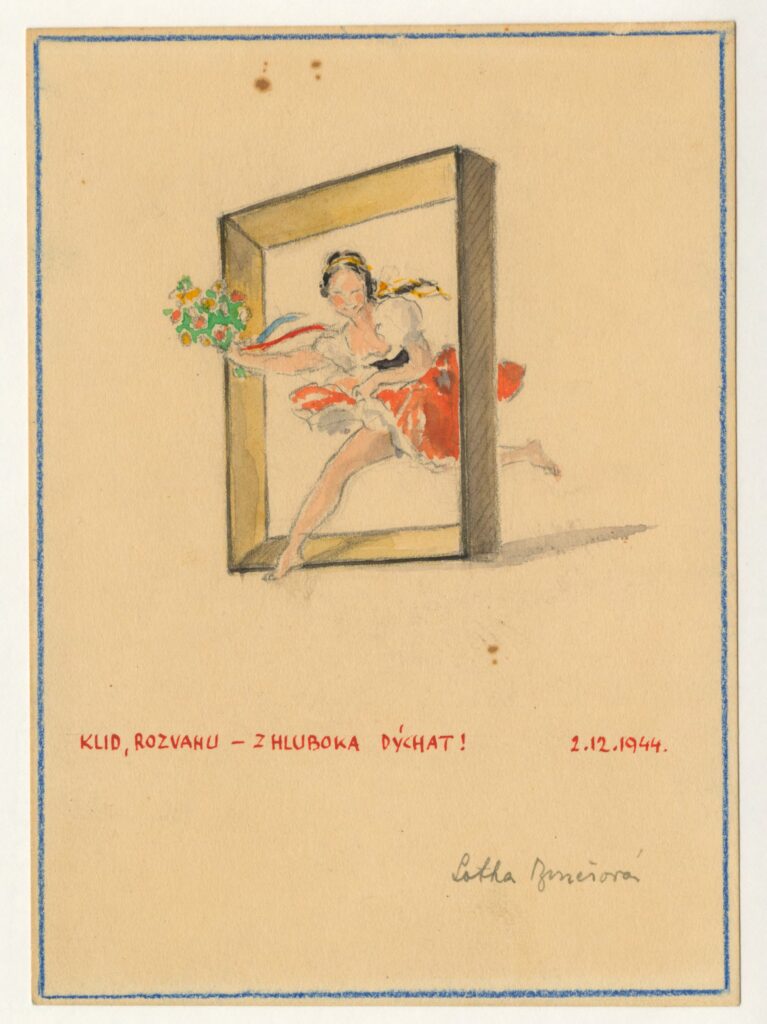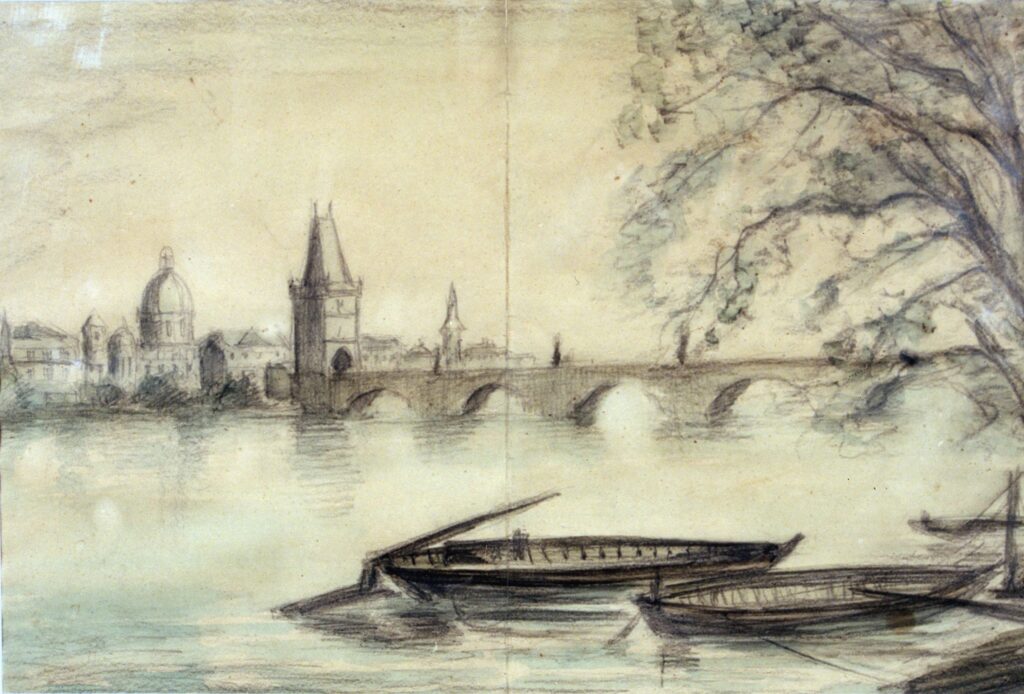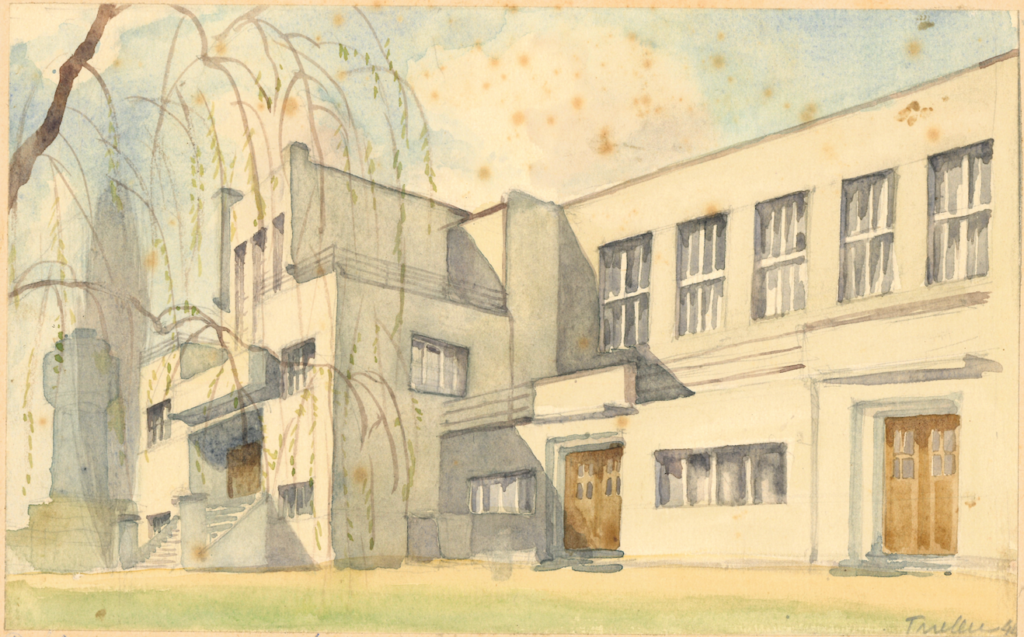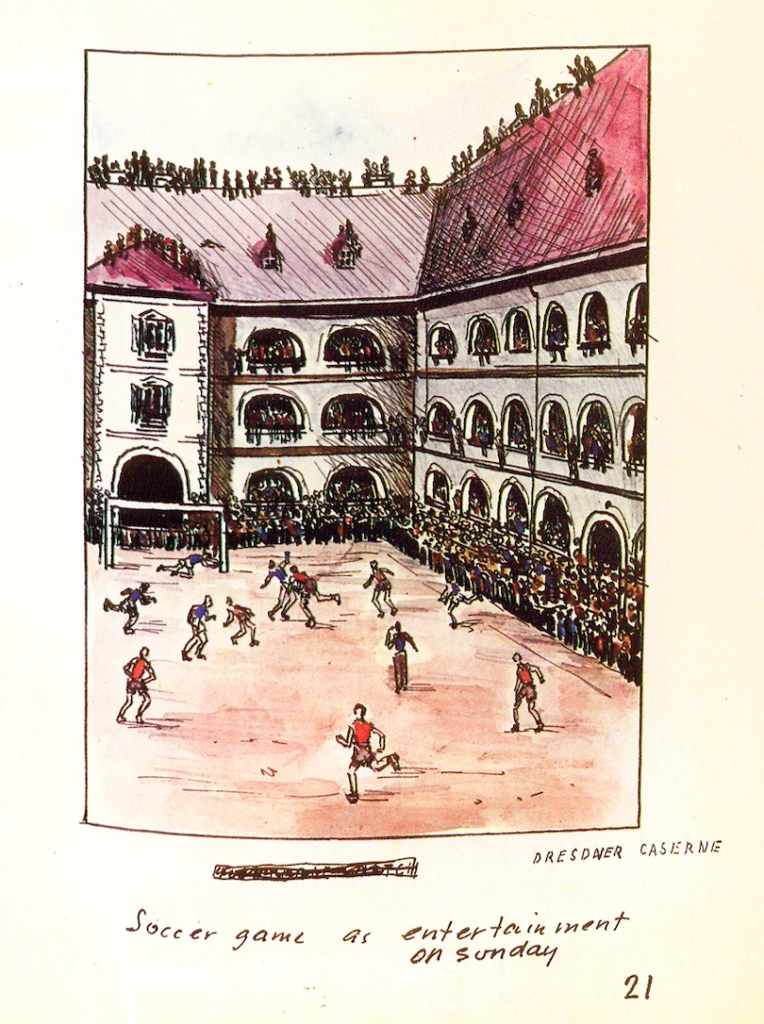Here you can find some images and maps from The Last Ghetto in better quality and color:
Lotka Burešová’s watercolor Klid, rozvahu – z hluboka dýchat! (Calm and prudence – breathe deeply!) shows a woman in a red skirt, black bodice, and white shirt holding a bouquet with blue and red ribbons. The figure is jumping through a frame, and the skirt is up, showing her entire legs. Courtesy of the Leo Baeck Institute.

“Jo Spier, Surgery,” Jo Spier’s drawing, Die Operative Medizin, (Surgery), depicts four doctors, three surgeons and one anesthesiologist, all of them men, operating on a patient. The operating room is modern; there are lights and medical machines, and the surgeons wear masks. The vaulted high ceiling reveals the Theresienstadt barracks architecture. The drawing is part of a report on the Health Services that provides statistics on its five surgical departments. Courtesy of the Jewish Museum Prague and Petra Kristen.
This watercolor by Fritta shows a classic Prague scene of the Charles Bridge and Vltava River, observed from the Lesser Town. The peaceful, simple picture is devoid of people, rendered in washed-out colors. Fritta gave this simple drawing for the cook Edgar Krása who acted as patron for many Theresienstadt artists. Courtesy of the United States Holocaust Memorial Museum.

Norbert Troller’s watercolor depicts the functionalist building of Sokolovna, a former sports club that was the site of cultural events in Theresienstadt. On the far left is the outline of the water tower. Courtesy of the Leo Baeck Institute.

Alfréd Kantor made this drawing a soccer game inside the Dresden barracks soon after the liberation as part of his picture memoir about his imprisonment. Huge crowds cheer from the sides, windows of the three floors, and there are even spectators who have climbed up to the roof. Alfréd Kantor, “Soccer Game as Entertainment on Sunday.” Courtesy of Jerry Kantor and Monica Churchill-Kantor.

